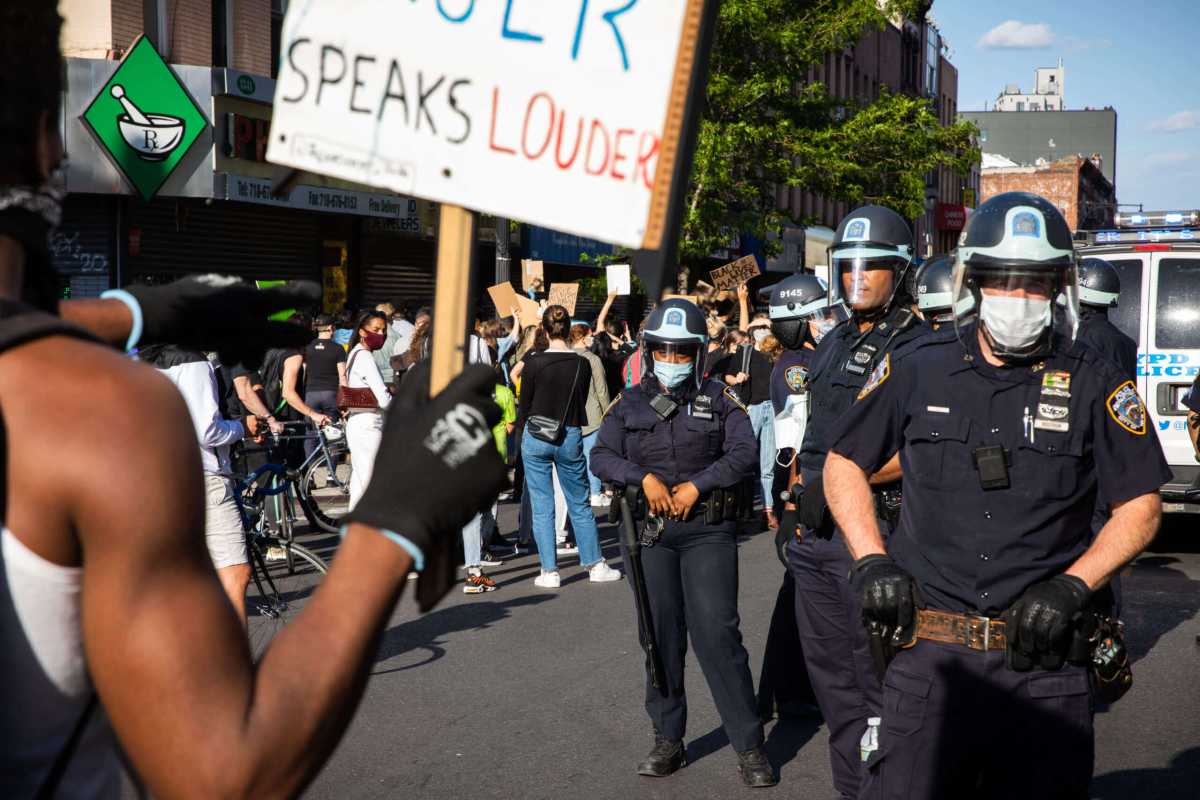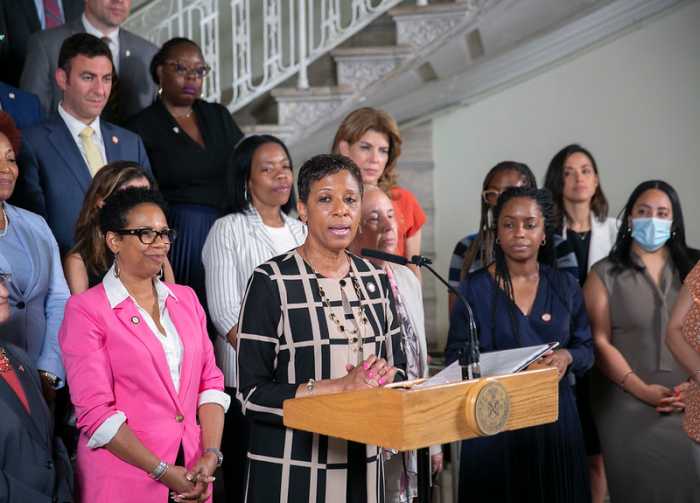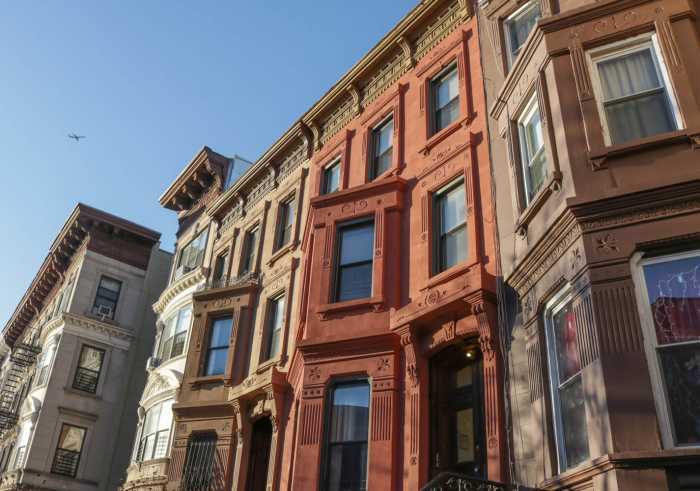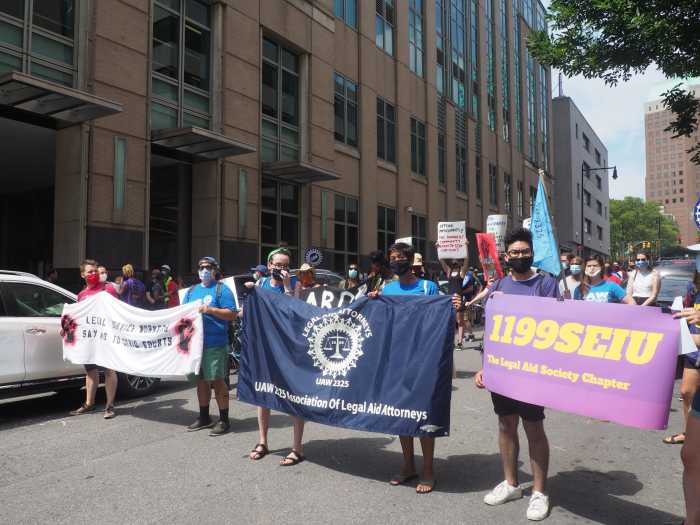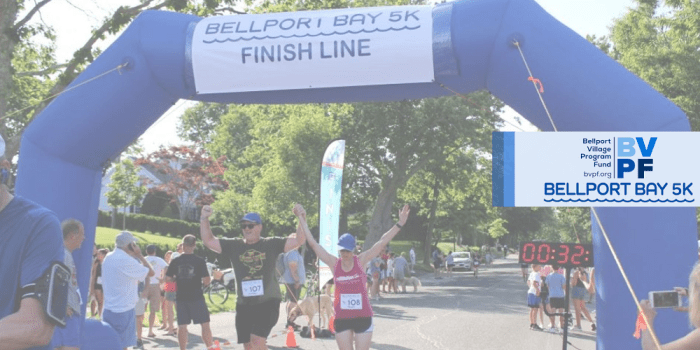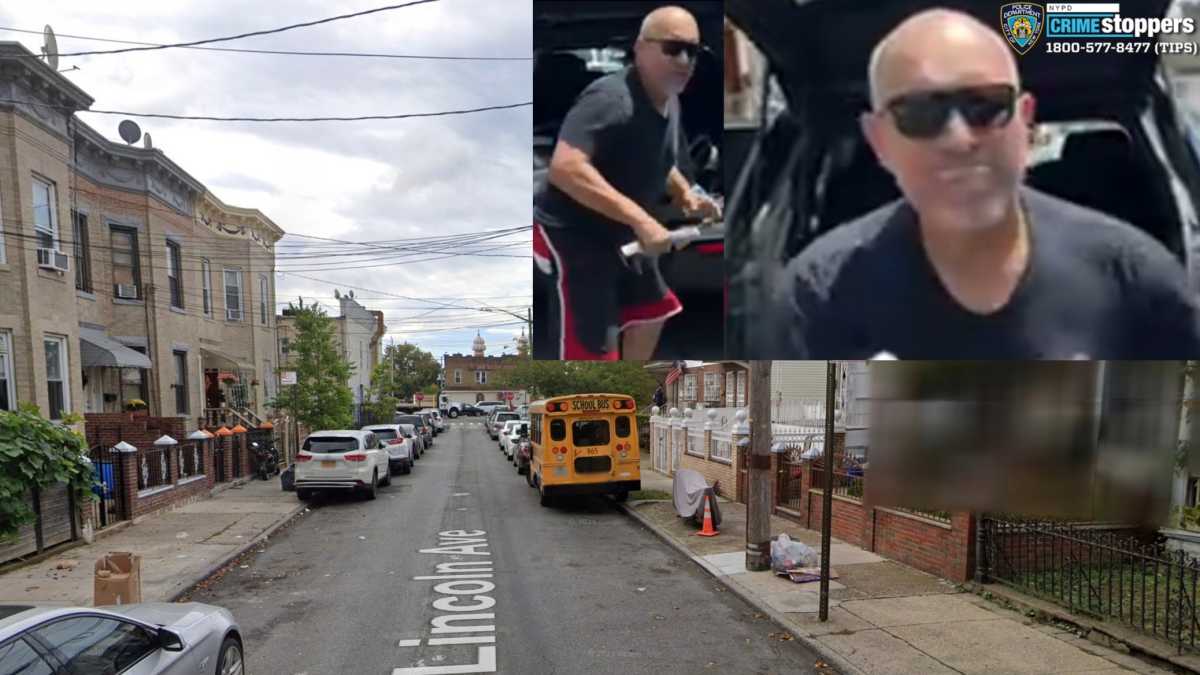New York City has paid out more than $67 million in settlement payouts for lawsuits alleging police misconduct so far this year, according to a new analysis by the Legal Aid Society, shelling out in seven months the same amount they have paid for entire calendar years in the recent past.
The money accounts for 557 misconduct cases settled out of court, according to the nonprofit legal service, compared to $68 million for 1222 cases in 2019 and $62 million for 930 lawsuits in 2020. Though the number of lawsuits dropped in 2021, to 751, the total settlement amount skyrocketed to $87 million out of the city’s coffers.
The data is skewed by four cases with pricey settlements totaling $47 million, or 70% of the total payout amount, a New York City Police Department representative told Brooklyn Paper. The rest of the cases are “more accurately aligned with settlements of previous years, which have steadily declined since 2017,” the rep said.
A $12 million settlement in Brooklyn
One of those high-dollar cases was settled just last month, according to city records, in the case of a then-17-year-old who was left paralyzed after allegedly being tackled by two officers — Pedro Rodriguez and Pavel Kuznetsov of Brooklyn’s 72nd Precinct. Nearly three years after the initial lawsuit was filed, the city paid a whopping $12 million to the plaintiff.
According to court documents, Kuznetsov and Rodriguez were one of a number of officers who responded to an altercation in Sunset Park in the early hours of May 20, 2018. The plaintiff was not part of the fight, and was walking away from the scene when Kuznetsov “unlawfully pursued” and tackled him to the ground.
The plaintiff repeatedly told officers that he could not move or feel his legs, according to the complaint, but they continued to try to force him to stand as they handcuffed and arrested him. Emergency responders eventually brought the teen to the hospital, where he was diagnosed with neck fractures and spinal cord injuries.
While he was still at the hospital, Kuznetsov and Rodriguez served the plaintiff with a summons for Disorderly Conduct. The charge was later dismissed.
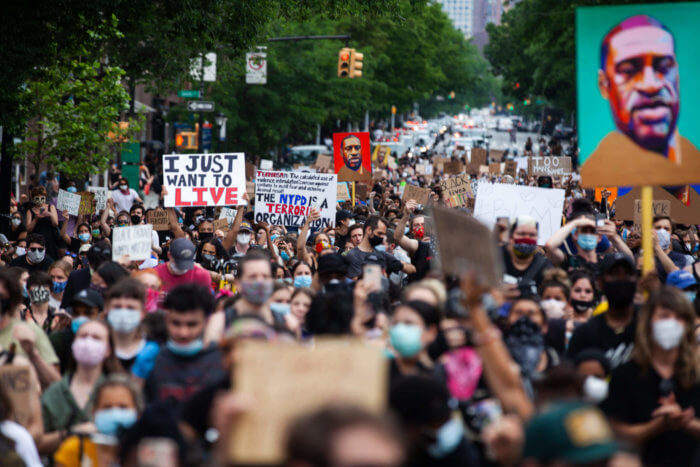
Lawsuits are not always accompanied by an investigation by the police department or the city’s Civilian Complaint Review Board, said Jennvine Wong, a staff attorney with Legal Aid’s Criminal Defense Practice Special Litigation Unit, and, even if a suit requires a huge payout, many officers are not disciplined.
Rodriguez, who has been with the NYPD since 2006, had been the subject of at least two prior lawsuits, according to 50-a.com, one of which was settled for $50,000 in 2015. He has been the subject of 11 Civilian Complaint Review Board complaints, according to city records, and in 2009 was placed on probation after injuring someone with a “dangerous instrument” while off-duty.
“He was put on dismissal probation, but say he had been fired at that point, a teenager would not have been paralyzed, this $12 million lawsuit because of that teenager being paralyzed would not have happened, and the city would have saved $1.2 million in earnings since 2010,” Wong said.
NYPD tort claims made up 37% of the overall claims resolved by the city in Fiscal Year 2021, according to the Comptroller’s report, and tort claims and judgment payouts — which are usually paid out after a case is decided in court — totaled more than $200 million.
“No admission of guilt, no liability”
There are many reasons a suit may not be connected with an investigation by the CCRB or the NYPD’s Internal Affairs Bureau, Wong said. Attorneys representing clients in civil suits may advise against making a complaint while a lawsuit is ongoing, and some people feel that they don’t need to file a complaint because they’ve already filed a suit.
Wong speculated that there may be less incentive for the department to investigate lawsuits that have already been settled.
“What that means when they’re settled is there’s no admission of guilt, no admission of liability,” she said.
Some clients are discouraged from filing a complaint because they were arrested during their incident with cops, Wong said, and first have to deal with that charge in court. By the time they’re done with that, people are exhausted from dealing with the criminal charges, or the statute of limitations to file a lawsuit may have already passed.
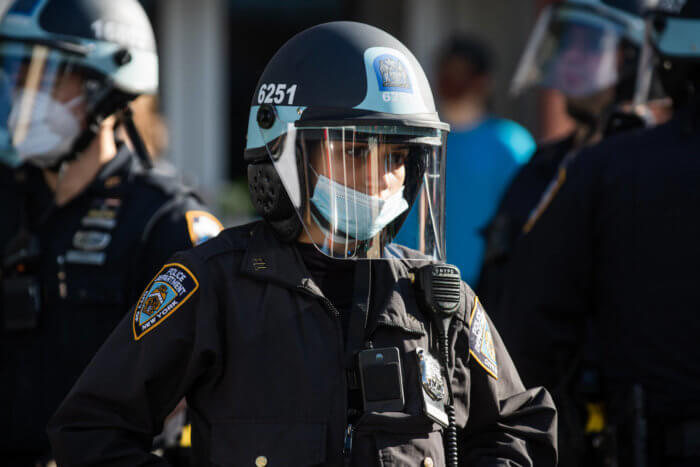
Several of the recently-settled lawsuits in Kings County included criminal charges issued by the cops and thrown out by courts. In May, the city settled for $95,000 a lawsuit filed against three officers of Police Service Area 3, which oversees public housing complexes in North Brooklyn, after they allegedly tasered and pepper-sprayed a resident who walked out of his apartment to investigate an argument happening in the hall.
The man had to be taken to Brooklyn Hospital after he passed out, according to court documents, and was later taken to Central Booking and ordered to appear in criminal court, where the charges against him were dismissed.
A federal lawsuit, settled in July for $40,000, accused several officers — including Tyler Howe of Williamsburg’s 90th Precinct — of violating the Constitutional rights of two plaintiffs after they were stopped, searched and arrested by a group of undercover officers in January 2020.
Both complainants were illegally strip-searched at the precinct, according to court filings. One was released without paperwork and Brooklyn District Attorney’s office declined to prosecute the other, declaring that he had been subject to unlawful search and seizure.
Howe has ten CCRB complaints in total, with three substantiated, and, in 2018 claimed, along with his colleagues, that a 19-year-old delivery worker “violently resisted” arrest before officers tackled him to the ground and arrested him — video footage later showed that the delivery worker had not resisted arrest and that officers had lied about their use of force during the incident.
Transparency for the NYPD
Wong said she hoped continuing to bring to light the number of cases and the amount of money spent could help to influence change both within the NYPD and in the city government — beginning with increasing transparency about misconduct cases.
“While we do have independent oversight agencies, the issue is that the police commissioner still has final discretion, and when the police commissioner has final discretion, what does that mean for the rest of us?” she said.
The lack of accountability is especially jarring for clients facing criminal charges who receive long disclosure statements from the DA’s office because the officers involved in their case have been involved with multiple lawsuits.
“The first thing that they’re going to think of is, ‘How is this officer still allowed to work and I’m getting busted for something small like petit larceny or something,’” Wong said. “The thought is ‘There’s no accountability, it doesn’t matter if I report the harassment to the police. It also really highlights, I think, this abuse of authority and the two systems of justice that we have. And how officers can expect to be held to a different standard, one that is easier on them.”



